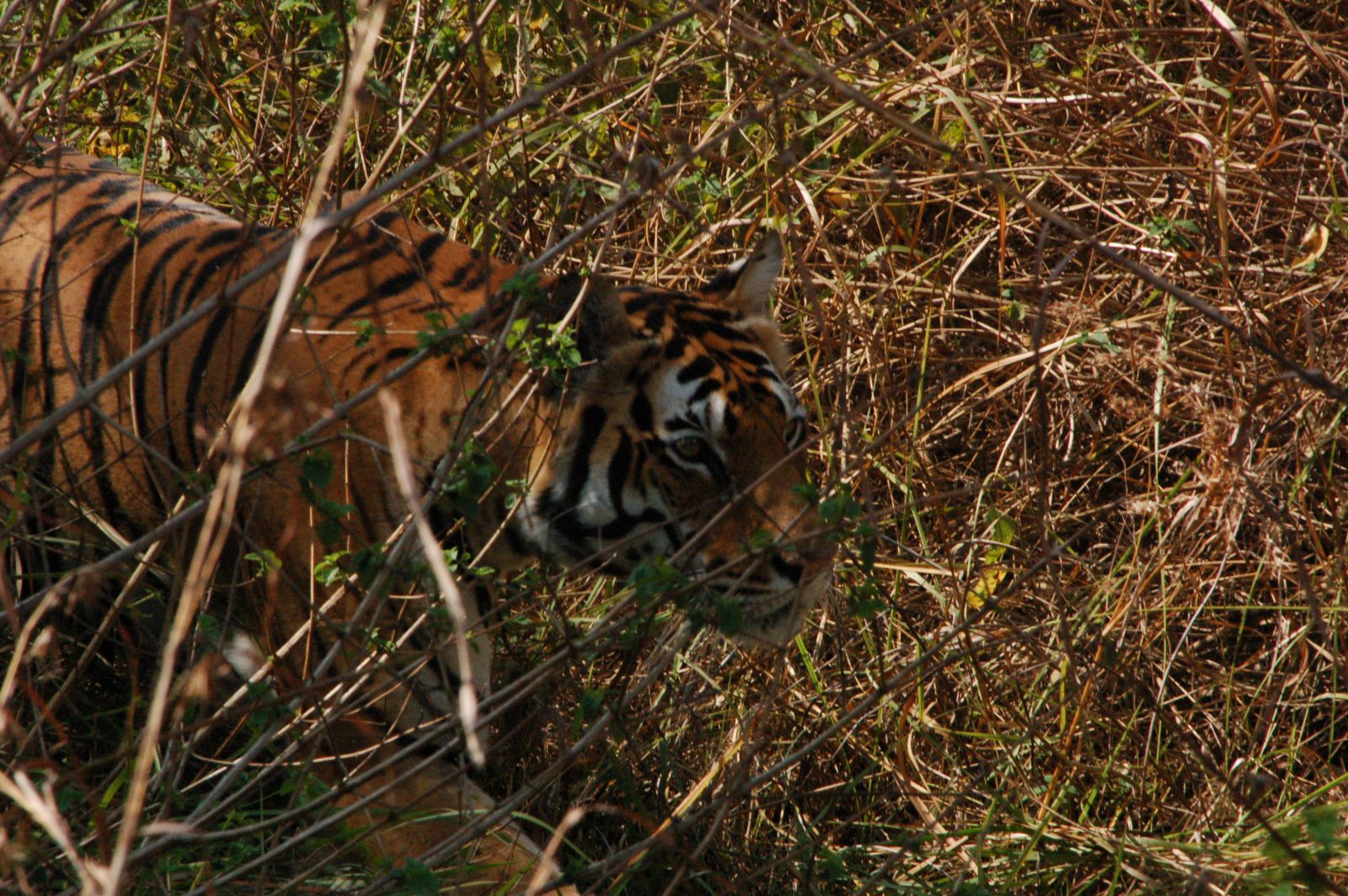The tiger has a mythical and religious dimension that few other animals posess, especially in Asia. The tiger is an even more charismatic animal than the lion, shrouded in an aura of power and mystery. It combines the elusiveness and beauty of the leopard to the lion's brute strength. Unfortunately this magnificent beast and jewel of Asia's wilderness is dramatically threatened in all its range. There are less than 1500 tigers in India whereas they were more than 40 000 at the beginning of the XX century. Less than 300 tigers remain in Indochina, around 600 in Malaysia and hundreds in Sumatra. The Southern Chinese tiger is already extinct and there are only a few Siberian tigers left. Several factors can explain such a decline but most of all deforestation and wildlife trafficking. This is especially the case in South East Asia. Tigers body parts are used in Chinese pharmacy for alleged medicinal properties which are more the product of fantasy than scientific knowledge. Tiger farming is also a developing practice in China where tigers are treated like cattle and killed in dramatic and inhumane fashion. The demand in tigers body parts is responsible for the generalized poaching organized by local mafias which supplies the Chinese market.
The tiger has a similar way of life as other solitary felids such as leopard, jaguar, snow leopard and puma. The tiger lives alone and adults and only meet to mate. However recent studies demonstrate that Indian tigers may be a bit more social than originally expected. Indeed, male tigers may join the female and cubs for short periods of time, either to share a prey, rest and even play with the cubs like male lions sometimes do. Tigers are territorial like other cats. The male territory overlaps that of several females. Each tiger defends its territory against other tiger of the same sex. Young males will try to take over another male's territory. When it happens the new resident male becomes a danger for the previous litter of cubs. The new male will try to kill the cubs in order to mate with the females and spread its own genes.
Length: 240-265 cm for the female, 270-310 cm for the male.
Height: 90-110 cm.
Weight: 100-160 kg for the females, 175-260 kg for the male.
Breeding: Gestation: 95-107 days. Estrous: 2-7 days. Sexual maturity: 2,5 to 3 years in average. Litter: 2-5 cubs. Weaning: 3-5 months. Cubs' independence: 17-24 months.
Habitat: From dry forest to tropical rainforest. They avoid arid areas. Tigers are dependant from cover.
Prey: Few animals can withstand the tiger's power. The tiger feeds mainly on deers especially sambar, axis and barasingha, antelopes such as the nilgai, wild boars, adult gaurs, buffalos, small rhinos and elephant calves. However, adult gaurs, buffalos and wild boars are more than able to stand their ground against a tiger. Adult rhinos and elephants will also attack a tiger which threaten their calves. More rarely, the tiger will even tackle full grown crocodiles and pythons. Occasionally when prey is scarce, tigers prey on small animals such as rodents, barking deers and small predators.
Predators: None and tigers dominate all other predators. Only a determined big pack of wild dogs can pose a genuine threat to a tiger and only at the expense of several dholes lives.
Best places to see it: Bandhavgarh and Tadoba are by far the best parks to see a tiger. However sightings are not guaranteed. Tiger is as elusive as the leopard and does not try to show off like the lion which is even more conspicuous since it lives in group. Tigers are partial to dense cover which makes them even harder to spot. However, tigers density is high in these parks which may explain why they are more visible. If you stay three days or more in these parks, you are almost t sure to see at least one, in April/May you may even see one on each safari. In winter from November to February the sightings frequencey is much lower and you should be considered lucky if you see one every three days.
After Tadoba and Bandhavgarh, Kanha and Ranthambore are probably the best parks. Personally, I would rate the probability to spot a tiger in these parks at 50% but you can also spend thee days there without seeing the tail of one. Ranthambore used to be the best park in India but it is on the decline because of its intense touristic activity, tigers are often seen from afar there. Kanha is a good park but its big surface area and forest cover make it hard to spot the cat.
Behind these four parks, Corbett, Kaziranga, Pench and Panna are worth mentionning. Although better than most other parks in the country, tiger sightings are not as good as in Bandhavgarh, Kanha, Ranthambore and Tadoba. Chance to see a tiger in these parks is similar to the chance of seeing a leopard in Africa. So difficult but not impossible.
There are other tiger reserves in India like Nagarahole (Rajiv Gandhi), Bandipur and Periyar which are some of the most famous. However, tiger sightings remain exceptional.
